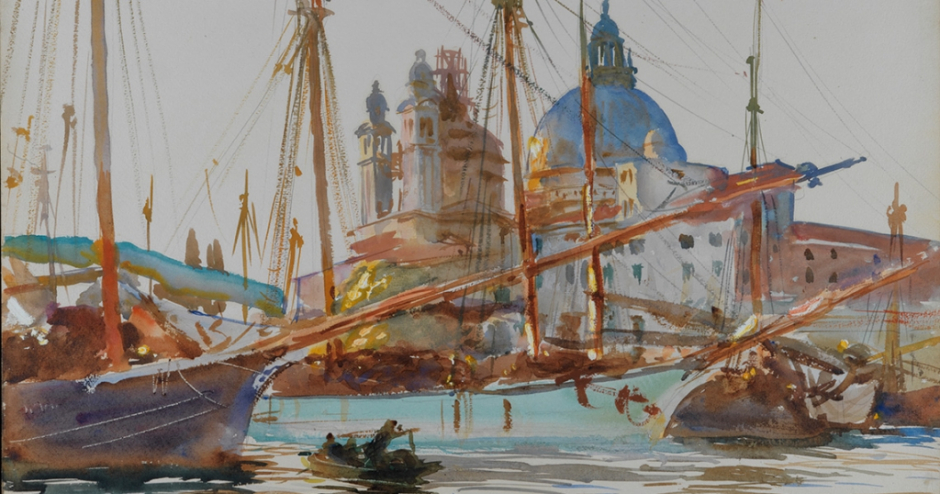John Singer Sargent, The Watercolours, Dulwich Picture Gallery, 21 June – 8 October 2017.
This is not the first exhibition of Sargent’s watercolours; a little fossicking around on the web will find you a YouTube video of comparable exhibitions in Houston and Boston. So, why is it that a painter known mostly for his turn-of-the-twentieth-century society portraits in oils should excite such interest as a watercolourist? Perhaps it is the sheer technical brilliance of these watercolours; the sheer ‘I have the technique so I’m going to use it’ hutzpah of this astonishing painter. As the wonderful catalogue accompanying the exhibition notes, Sargent felt the watercolours ‘keep up my morale’.
The exhibition is divided into four broad areas: fragments; cities; landscapes and figures. The first of these, ‘Fragments’ contains paintings which are almost literally fragments, as the pictures are cropped views of objects seen on Sargent’s extensive travels, not only around southern Europe but also the Middle East. These paintings are often low vantage views of parts of buildings or ensembles such as Venetian fishing boats where the concentration is on the masts and the sails hanging in clusters, or the amazing ‘Hull of a Boat’ from around 1922. In this painting, Sargent’s viewpoint is from right up close under the wooden hull of a boat suspended on poles and beams. And the viewer is right towards the stern of the boat near the rudder. The boat feels massively above the viewer; we are crowded in with Sargent under the structure. And Sargent’s brilliance is to make this watercolour with its dark browns and greens enfold us and hold us in his view, as the sky, indicated by paper left deliberately blank and light, shows us the openness beyond the hull.
Sargent’s ‘cropping’ view is epitomised in a view of Spain’s iconic Alhambra citadel. This is a low view of the bottom parts of two closely neighbouring pillars and some of the tessellated floor they rest on along with a tiled panel of wall. Again, Sargent’s skill is to fill this small moment with light, so that the viewer is pulled into an intimate relation with this small part of a much larger and ‘greater’ whole. ‘Venice, steps of a Palace’ is a view of just that. Clearly painted on a bobbing gondola on one of Venice’s canals, Sargent concentrates on the murky canal splashing onto the water steps of one of Venice’s palaces. Here, too, the reader is taken to view something they would ordinarily pass by.
Sargent is a genius with moving water. There are number of his water colours which focus on streams and cascades. ‘In the Tyrol’ is one of a series of studies of mountain streams. In this and other paintings, Sargent just seems to capture the moving water at a ‘fascination point’; yet again, pulling the viewer towards the moving water captured with wonderful technique.
Such a sense of the ordinary picked out with Sargent’s extraordinary skill is embodied in what are the most revelatory of the exhibition’s paintings, Sargent’s paintings of the First World War. His figure paintings of soldiers resting are almost to be expected, such was Sargent’s almost obsession with reclining figures. And ‘Thou shalt not steal’ shows two soldiers, one in a kilt, scrumping from a local orchard. But elsewhere, Sargent’s skill with landscape lights on scenes which are almost epiphanic, such as ‘A Tarpaulin over a Dug-out, Ransart’, which dates from 1918. Here, the title tells us exactly what we’re looking at. But, as ever, what is a very ordinary moment Sargent makes revelatory. Unlike the other war artists who have presented that war as wet and bloody, which it clearly was, Sargent shows the drapery of the tarpaulin in hot sunshine. And shows us, in an instant, another dimension to the received view.

